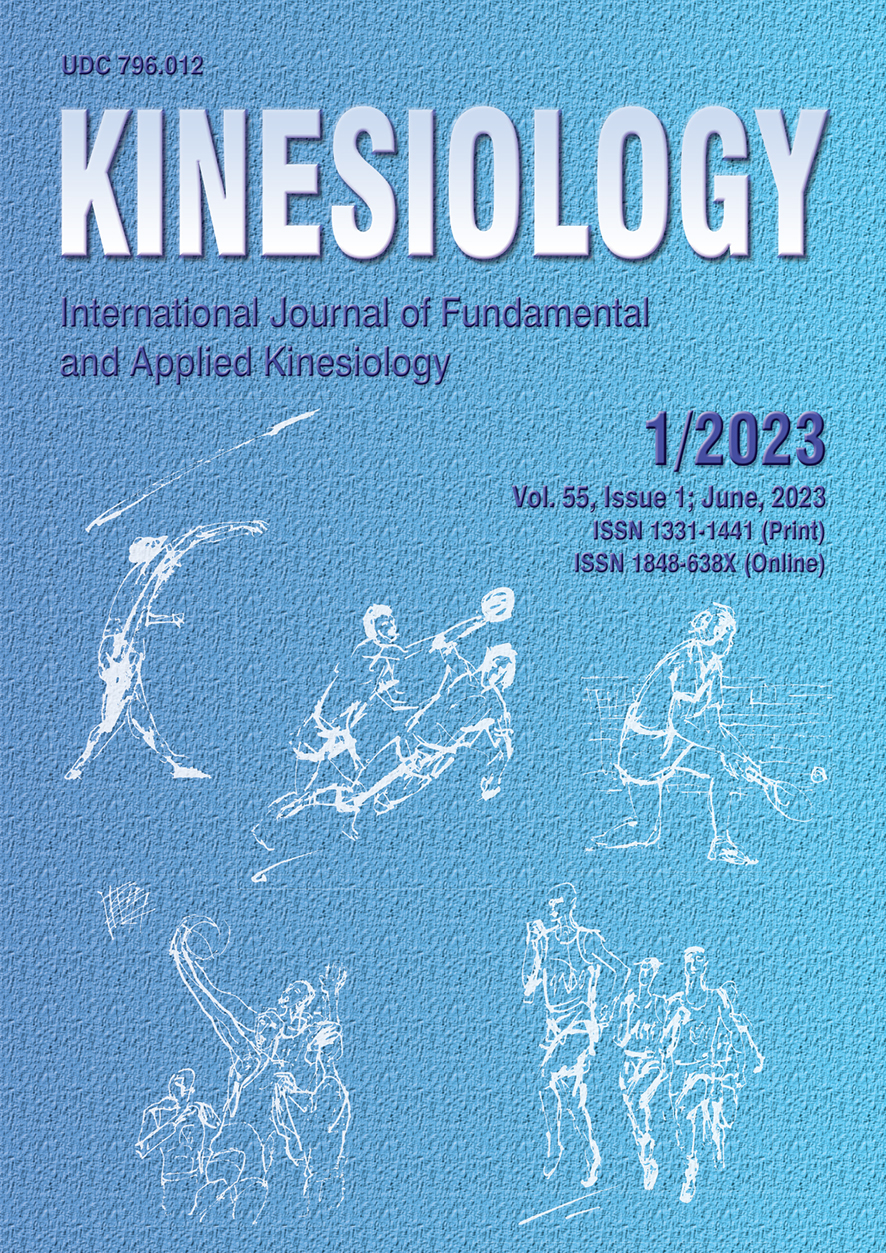ACCURACY OF THE 20-M SHUTTLE RUN TEST FOR INDIVIDUALIZING EXERCISE INTENSITY OF HIGH-INTENSITY INTERVAL TRAINING
Abstract
The aim of the study was to investigate the accuracy of the 20 m shuttle run test (20mSRT) for the prescription of high-intensity interval training (HIIT) and to examine the appropriate intensity, prescribed by the 20mSRT end-test speed, for the execution of HIIT. Twenty physical education students (age: 22.4 ± 0.8 years, body height: 175.7 ± 8.9 cm, body weight: 73.8 ± 13.4 kg) participated in the study. On two separate occasions the participants were first tested with a maximal incremental exercise test and the 20mSRT. On another two occasions they were required to perform a 10-minute HIIT session comprised of 15-s runs interspersed with 15-s passive recovery. The intensities of the HIIT sessions were either 100% (T100%) or 110% (T110%) of the end-test speed reached in the 20mSRT. Mean oxygen uptake (VO2) (84.4 ± 5.5% vs 77.8 ± 6.9% of VO2max), mean heart rate (HR) (93 ± 2.8% vs 87.6 ± 4.6% of HRmax), blood lactate concentration (12.6 ± 2.1 vs 5.4 ± 2.6 mmol/l), and ratings of perceived exertion (9.5 ± 0.5 vs 6.7 ± 1) were all significantly (p<.01) higher during T110% vs. T100%. The percentage of the total exercise time spent ≥ 90% VO2max (37.6 ± 25.3 vs. 18.6 ± 18.0%, p<.05) and ≥ 90% HRmax (73.9 ± 17.7% vs. 37.5 ± 33.3, p<.001) were also significantly higher during T110%. The mean VO2 and HR coefficient of variation during T110% were 6.5 and 3%, respectively. The cardiorespiratory, metabolic, and perceptual responses to T110% were reflective of the responses typical for HIIT, while T100% induced insufficient physiological stress to enable optimal cardiorespiratory adaptation. Therefore, the intensity of 110% 20mSRT is preferable for inducing the appropriate acute physiological responses and the 20mSRT can be used to accurately prescribe HIIT.
Key words: exercise testing, aerobic endurance, beep test, maximal oxygen uptake, heart rate, acute exercise responses
Downloads
Published
How to Cite
Issue
Section
License

This work is licensed under a Creative Commons Attribution-NonCommercial 4.0 International License.
At Faculty of Kinesiology we recognize that access to quality research is vital to the scientific community and beyond. Kinesiology is non-profit journal and all costs of publishing and peer review process are covered by the publisher itself or other funding sources like Ministry of Science and Education of the Republic of Croatia. Full text papers are also available free of charge at http://hrcak.srce.hr/kineziologija. There are no restrictions on self archiving of any form of paper (preprint, postprint and publisher's version).
Articles are distributed under the terms of the CC BY - NC 4.0
Kinesiology does not charge any fees to authors to submit or publish articles in our journal.


